
Filter News
Area of Research
News Topics
- (-) Mercury (12)
- (-) Molten Salt (8)
- (-) Quantum Science (69)
- 3-D Printing/Advanced Manufacturing (125)
- Advanced Reactors (34)
- Artificial Intelligence (95)
- Big Data (58)
- Bioenergy (92)
- Biology (100)
- Biomedical (59)
- Biotechnology (23)
- Buildings (59)
- Chemical Sciences (67)
- Clean Water (30)
- Climate Change (101)
- Composites (29)
- Computer Science (194)
- Coronavirus (46)
- Critical Materials (28)
- Cybersecurity (35)
- Decarbonization (81)
- Education (4)
- Element Discovery (1)
- Emergency (2)
- Energy Storage (110)
- Environment (197)
- Exascale Computing (39)
- Fossil Energy (6)
- Frontier (44)
- Fusion (55)
- Grid (65)
- High-Performance Computing (88)
- Hydropower (11)
- Irradiation (3)
- Isotopes (53)
- ITER (7)
- Machine Learning (48)
- Materials (144)
- Materials Science (143)
- Mathematics (9)
- Microelectronics (3)
- Microscopy (51)
- Nanotechnology (60)
- National Security (66)
- Net Zero (14)
- Neutron Science (131)
- Nuclear Energy (109)
- Partnerships (48)
- Physics (63)
- Polymers (33)
- Quantum Computing (35)
- Renewable Energy (2)
- Security (24)
- Simulation (49)
- Software (1)
- Space Exploration (25)
- Statistics (3)
- Summit (59)
- Sustainable Energy (129)
- Transformational Challenge Reactor (7)
- Transportation (97)
Media Contacts
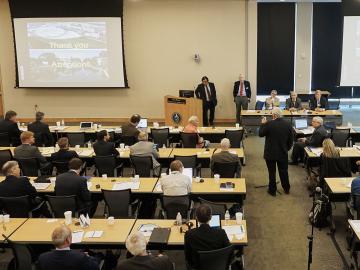
Experts focused on the future of nuclear technology will gather at Oak Ridge National Laboratory for the fourth annual Molten Salt Reactor Workshop on October 3–4.

Qrypt, Inc., has exclusively licensed a novel cyber security technology from the Department of Energy’s Oak Ridge National Laboratory, promising a stronger defense against cyberattacks including those posed by quantum computing.
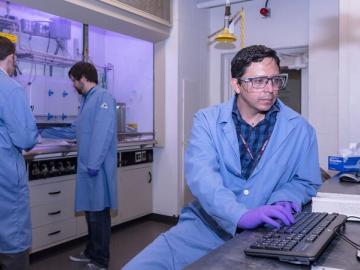
Oak Ridge National Laboratory has developed a salt purification lab to study the viability of using liquid salt that contains lithium fluoride and beryllium fluoride, known as FLiBe, to cool molten salt reactors, or MSRs. Multiple American companies developing advanced reactor technol...

Scientists at the Department of Energy’s Oak Ridge National Laboratory are the first to successfully simulate an atomic nucleus using a quantum computer. The results, published in Physical Review Letters, demonstrate the ability of quantum systems to compute nuclear ph...

Raman. Heisenberg. Fermi. Wollan. From Kolkata to Göttingen, Chicago to Oak Ridge. Arnab Banerjee has literally walked in the footsteps of some of the greatest pioneers in physics history—and he’s forging his own trail along the way. Banerjee is a staff scientist working in the Neu...
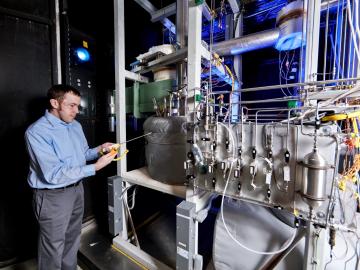
Thanks in large part to developing and operating a facility for testing molten salt reactor (MSR) technologies, nuclear experts at the Energy Department’s Oak Ridge National Laboratory (ORNL) are now tackling the next generation of another type of clean energy—concentrating ...
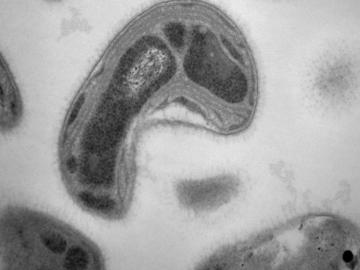
A team led by the Department of Energy’s Oak Ridge National Laboratory has identified a novel microbial process that can break down toxic methylmercury in the environment, a fundamental scientific discovery that could potentially reduce mercury toxicity levels and sup...
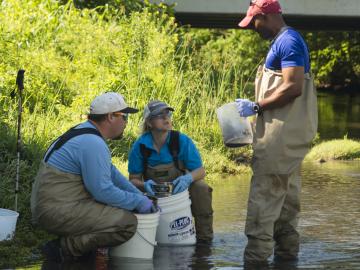
An Oak Ridge National Laboratory study is providing an unprecedented watershed-scale understanding of mercury in soils and sediments. Researchers focused on evaluating mercury and soil properties along the banks of a mercury-contaminated stream in Oak Ridge, Tenn., sampling 145 loca...
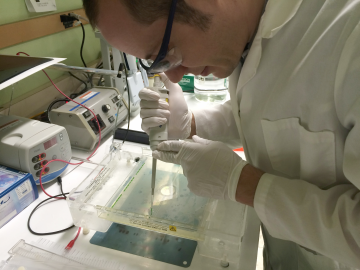
Environmental scientists can more efficiently detect genes required to convert mercury in the environment into more toxic methylmercury with molecular probes developed by researchers at the Department of Energy’s Oak Ridge National Laboratory. “We now have a quic...


